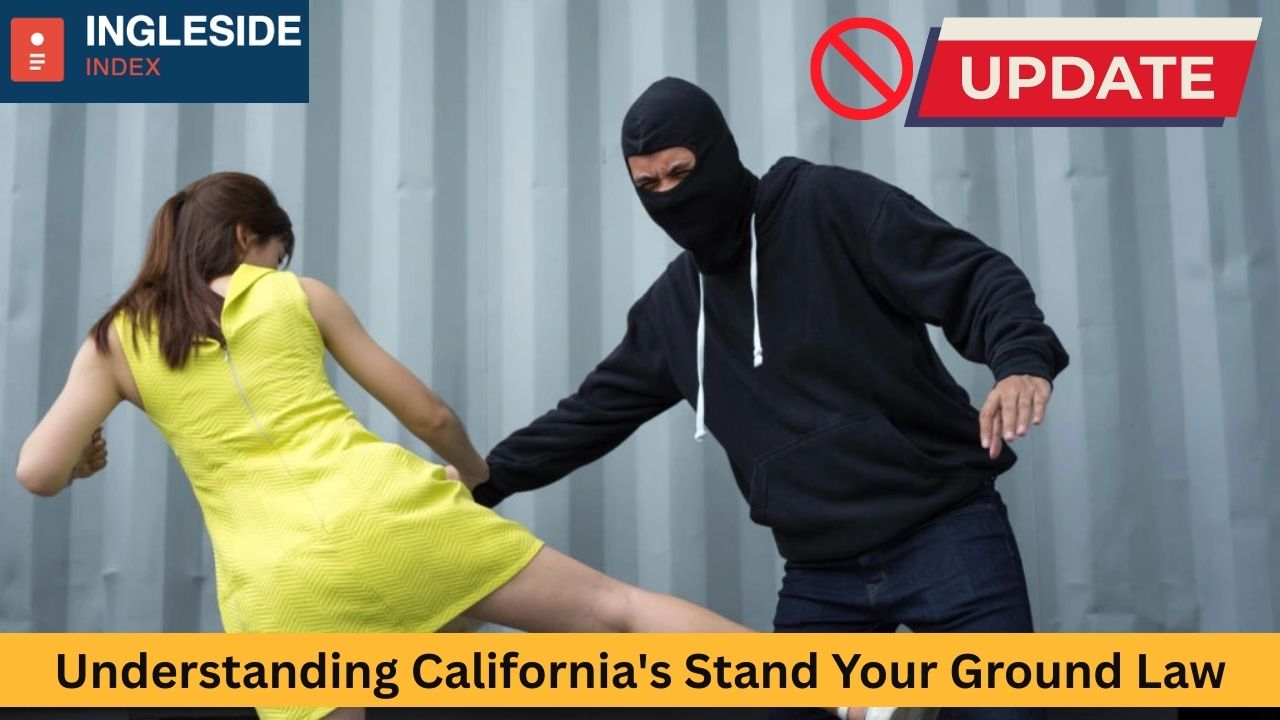In the wake of rising crime rates and debates about self-defense rights, California’s laws regarding when and how a person may defend themselves have gained renewed attention in 2025. Unlike many states with clear “Stand Your Ground” statutes, California operates under a more nuanced legal framework that often confuses residents. With several high-profile self-defense cases emerging in cities like Los Angeles, San Francisco, and San Diego, it’s more important than ever for Californians to understand what rights they have when it comes to protecting themselves or their property.
This article will break down California’s self-defense laws, clarify whether it has a Stand Your Ground rule, examine real-world examples, explore how the law applies in various cities, and offer tips for residents seeking to navigate these complex legal waters.
What Does “Stand Your Ground” Mean?
“Stand Your Ground” refers to a legal doctrine that removes the duty to retreat before using force in self-defense. In states with Stand Your Ground laws, individuals can legally use deadly force if they believe it is necessary to prevent death or great bodily harm—even if they have the option to escape safely.
This is contrasted with the “duty to retreat” rule followed in some other jurisdictions, where people must try to escape a dangerous situation before resorting to force.
Does California Have a Stand Your Ground Law?
California does not have a statute specifically titled “Stand Your Ground,” but it follows a similar principle under its jury instructions and case law precedents. The California Criminal Jury Instructions (CALCRIM No. 505 and 506) essentially allow a person to stand their ground and defend themselves without retreating if they are in a place they are legally allowed to be.
This means that California is a de facto Stand Your Ground state, even though the term is not used in its legal codes. The law applies only when the individual is not engaged in illegal activity and uses reasonable force in response to a perceived threat.
Castle Doctrine vs. Stand Your Ground in California
California also follows the Castle Doctrine, which provides legal protection to individuals who use force—sometimes deadly force—inside their home to protect themselves from intruders. Under this doctrine, there is a legal presumption that someone who breaks into your home intends to cause harm, and you are therefore justified in defending yourself without retreating.
This applies in situations such as:
-
A home invasion in Oakland
-
An attempted burglary in Sacramento
-
An intruder breaking into a residence in Bakersfield
While the Castle Doctrine is well established in California law, it only applies within the home or certain parts of private property, not in public places.
Key Requirements for Legal Self-Defense in California
To successfully claim self-defense in California, certain conditions must be met:
-
The person must reasonably believe they or someone else is in imminent danger of suffering bodily harm or death.
-
The amount of force used must be proportionate to the threat.
-
The person must be lawfully present at the location.
-
The individual must not be the aggressor in the confrontation.
These factors are critical in determining whether the use of force—especially deadly force—is legally justified in court.
Recent Changes and Clarifications in 2025
Although the basic structure of California’s self-defense laws hasn’t changed significantly in 2025, new judicial opinions and clarifications have helped shape public understanding. Some key developments include:
-
Use of Force in Vehicles: A growing number of self-defense claims stem from road rage incidents, especially in Los Angeles County, where carjacking reports have risen by 8% in the past year. Courts are now increasingly scrutinizing whether drivers who use weapons during confrontations in traffic are acting lawfully.
-
Public Protests and Defense Claims: Following multiple incidents in San Francisco and Berkeley, courts have emphasized that self-defense claims cannot be used as a blanket excuse for using force at protests unless there is a clear and immediate threat.
-
Clarification on Deadly Force: In 2025, California courts reaffirmed that deadly force is a last resort and only acceptable when a person reasonably believes there is no alternative to prevent serious injury or death.
How Self-Defense Laws Apply Across Major California Cities
Los Angeles
In Los Angeles, where crime rates have seen a moderate increase in some districts, residents often question whether they can protect themselves in public. While self-defense rights are consistent across the state, law enforcement in L.A. tends to thoroughly investigate such claims. In 2025, LAPD data revealed that over 370 self-defense cases were filed, but only 23% resulted in charges being dropped, underscoring the importance of following legal procedures closely.
San Diego
In San Diego, where tourism and nightlife contribute to crowd density, altercations in public are more likely. The city’s district attorney emphasizes de-escalation over confrontation, and local authorities encourage residents to retreat if possible, even though the law doesn’t require it.
San Francisco
In San Francisco, with a rise in property crime and homelessness-related altercations, residents have grown more concerned about their safety. However, courts here lean progressive and often examine whether non-lethal alternatives could have been used before deadly force.
Fresno
Fresno has witnessed an increase in rural home invasions. In response, local sheriffs encourage residents to understand their rights under the Castle Doctrine. However, they also advise citizens to report any incidents immediately to avoid unnecessary complications.
Sacramento
As the state capital, Sacramento sees both political activism and increasing crime in certain zones. With a population more familiar with policy than practice, legal seminars have become popular here, helping residents understand lawful defense boundaries, especially at political rallies and protests.
Differences Between Stand Your Ground and Other Self-Defense Laws
To better understand California’s stance, it’s important to contrast it with other states:
| State | Stand Your Ground Law? | Duty to Retreat? |
|---|---|---|
| Florida | Yes | No |
| Texas | Yes | No |
| New York | No | Yes |
| Illinois | No | Yes (public only) |
| California | Yes (case law) | No |
California’s flexibility lies between the strict Stand Your Ground of Texas and Florida and the retreat-first mentality of New York.
Controversies and Public Debate
California’s legal stance on self-defense has come under scrutiny for being both too vague and too lenient, depending on the viewpoint. Some of the key points of debate include:
-
Racial Disparities: Critics argue that Stand Your Ground laws disproportionately benefit certain demographics and can lead to unjust acquittals or unfair targeting of minorities.
-
Gun Ownership: In cities like Riverside and Anaheim, rising gun ownership has sparked concern that more people might take the law into their own hands.
-
Training and Awareness: Many Californians are unaware of what is legally allowed. Legal organizations in Santa Rosa and Long Beach now offer community courses on self-defense laws and firearm safety.
Role of Law Enforcement
Even if someone believes they acted in self-defense, police officers and prosecutors will still investigate thoroughly. Important steps taken by law enforcement include:
-
Reviewing video footage and witness statements
-
Conducting forensic analysis of weapons used
-
Determining whether the threat was real or perceived
It is not uncommon for individuals to be arrested and charged initially, and then later cleared once evidence supports their claim.
Real-Life Case Examples
Case in San Bernardino (2025)
A homeowner shot a man attempting to break into his house through the garage. Though the intruder was unarmed, the court upheld the homeowner’s right to use force under the Castle Doctrine, as the incident occurred at 2:00 AM and the break-in was verified via security footage.
Case in San Jose
During a late-night altercation in a parking lot, a man pulled a gun on someone he said threatened him with a bottle. The jury ruled against the defendant, stating he could have escaped and his use of deadly force was not proportional to the threat.
These cases illustrate how nuanced the law can be—and how outcomes vary depending on facts and location.
Practical Tips for Californians
If you’re a resident of California and concerned about your safety, here are some steps to ensure you stay on the right side of the law:
-
Avoid Confrontation: Walk away if you can do so safely.
-
Understand Proportionality: Do not escalate a situation unnecessarily.
-
Document Everything: If involved in an incident, report it, and preserve evidence.
-
Know Your Rights: Consider attending a local legal workshop.
-
Get Training: Proper firearm and self-defense training is encouraged, especially if you carry a weapon.
Future Outlook
As California continues to evolve with urban challenges, political shifts, and public safety concerns, self-defense laws may undergo further refinement. Lawmakers have hinted at potential legislation to clarify what constitutes reasonable fear, particularly in public settings. Any such changes would likely be influenced by public opinion, legal advocacy, and case law emerging from major cities.
Conclusion
Understanding California’s Stand Your Ground law in 2025 requires a balance of legal knowledge, situational awareness, and caution. Though the state allows individuals to defend themselves without a duty to retreat, each case is judged on its facts, context, and the reasonableness of the actions taken.
From Los Angeles to San Francisco, and from rural Fresno to the capital of Sacramento, California residents must walk a fine line between personal safety and legal liability. With proper education and awareness, individuals can better protect themselves—both physically and legally.




